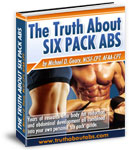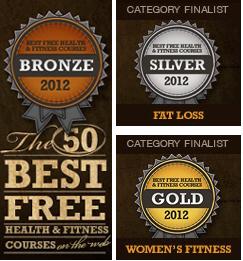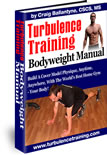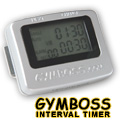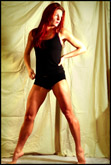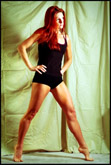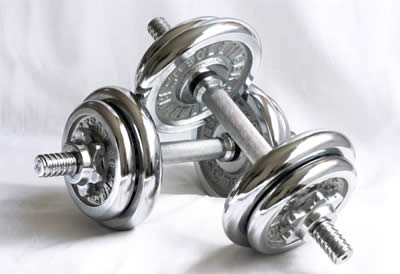I understand that Yoga is a great way to exercise.
I only “understand” this, but not KNOW it because I’ve never actually tried it.
I know, I know… I should at least try it before deciding whether it’s something that I would enjoy.
And I will … eventually. 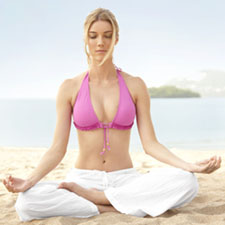
But at the moment, what I know about yoga I could write on a piece of paper, stuff in my ear and I’d still be able to hear clearly. LOL
So, therefore, because I DO understand that yoga is a great way to exercise and can help followers of the discipline achieve a wide range of goals, from spiritual-based to hard-core exercise, muscle building or strength-based, but I have no personal experience or knowledge about it, I thought it was high time to bring in a knowledgeable guest to give us the run-down about what yoga really is all about.
I also thought it would be helpful if we could get a coherent explanation of the differences between the various kinds of yoga that are currently being practiced, and how each style can help with achieving different kinds of goals.
So, I called up my friends over at sports outfitters “Sweaty Betty” to see if they’d be willing to do a guest post for us.
YAY !! They said “YES!” … So without further ado, here is an AWESOME and extremely informative guest post from the gang at Sweaty Betty:
~~~~~~~~~~~~~~~~~~~~~~~
A Beginners Guide To Yoga: Setting And Meeting Your Goals
Getting motivated to begin a fitness regimen can be intimidating.
It’s hard to go to a gym for the first time (or even for the first time in a while). Figuring out how to exercise properly, motivating yourself to go do it, and maintaining a regimen can be a difficult hill to climb.
Fortunately, there are options.
Yoga is an especially good one.
Yoga is accessible to those with a variety of goals and fitness levels.
There are many styles, each of which suited to those with differing fitness goals, whether it be an intense physical workout, increased good health and flexibility, or greater spiritual focus and serenity.
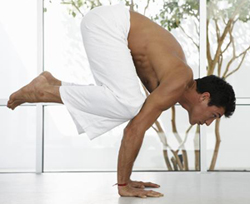
Regardless of the type of goal you choose for yourself, you can be certain to find a type of yoga that will help you achieve them. Best of all, your personal experience with Yoga can evolve as your skills, dedication and fitness level does.
For beginners, there exists yogic traditions that concentrate on the fundamentals of stability, proper alignment, and flexibility. In order to create confidence and security in learning, Lyengar Yoga, for example, uses belts, walls and other bodily props to aid the beginner in proper form of the discipline.
Viniyoga is a style of yoga that concentrates on providing an experience tuned to the individual, using breathing as the focus of each asana.
These forms of yoga are well suited to both the beginner, as well as those who are recovering from injury, or have other, chronic health issues. The watchword with these disciplines is accessibility. For anyone willing to devote themselves to this type of study it can help improve their health, bodily strength, and flexibility.
For those who are searching for a more vigorous workout, a popular, easily found option is Bikram Yoga, a demanding and consistent series of asanas executed in a hot, humid environment.
Sometimes (reductively) referred to as “hot yoga,” the Bikrim discipline is designed to not only provide a solid and rewarding cardiovascular workout, but uses a heated room to flush toxins from the body, and lessen the possibility of injury due to stiff, cold muscles.
It is a challenging, exhausting workout, that will provide dramatic results for the dedicated practitioner, increasing physical strength and endurance.
Similarly challenging (but in a different way), Ashtanga Vinyasa Yoga is a series of asanas that increase in difficulty, and concentrate on a seamless, challenging flow.
Astanga’s focus is on breath control and bodily precision, and its practitioners claim that the benefits of Ashtanga include improved respiration, digestion, and balance.
Even the spiritual aspects of yoga vary wildly between disciplines.
Those desiring a purely fitness-based yoga can try the westernized discipline of Power Yoga, which downplays the spiritual aspects of the asanas, in favor of a strictly physical experience.
Power Yoga is less rigidly taught than the eastern disciplines it springs from (varying from instructor-to-instructor and class-to-class), and is sometimes derisively called “gym yoga” by those who prefer a more traditionally spiritual approach.
Power Yoga, as the name suggests, is designed to give you a workout, help you increase general fitness, and let you find enlightenment on your own time.
Conversely, Kundalini Yoga emphasizes the holistic and spiritual, incorporating extensive meditation, chanting, and pranayama.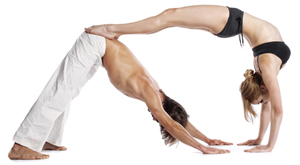
Kundalini uses these tools in pursuit of the practitioner’s self-awareness, and achieving a higher state of consciousness.
If you’re looking for a yogic discipline that promises to help you merge with the universal self, Kundalini is a path suitable for exploration.
The important thing to remember, as a yoga beginner, is that pretty much whatever type of fitness level you begin from, whatever kind of spirituality you ascribe to, and whatever kind of results you desire, the right kind of yoga can fulfill your needs.
The vast number of yoga options that can be found ensures that “the right kind” of yoga exists, for you.
However, since there exist so many options and disciplines out there, the best way to find the right one for you is to actually try them.
Once you’ve found the style of yoga you feel most comfortable practicing, you can acquire whatever equipment and yoga clothing you’re lacking from a quality online source such as Sweaty Betty.
~~~~~~~~~~~~~~~~~~~~~~~
Well, I certainly learned a lot. I think I want to try out Ashtanga Vinyasa or Power yoga. Sounds like those two would be right up my intense, heavy-liftin’ alley!
I hope that helped you figure out which kind(s) of yoga could be right for you.
And of course a special THANKS goes out to my friends at Sweaty Betty for an awesome, thorough and informative look at yoga!!
Have a fit, fun and fantastic day.
Girlwithnoname
17227









